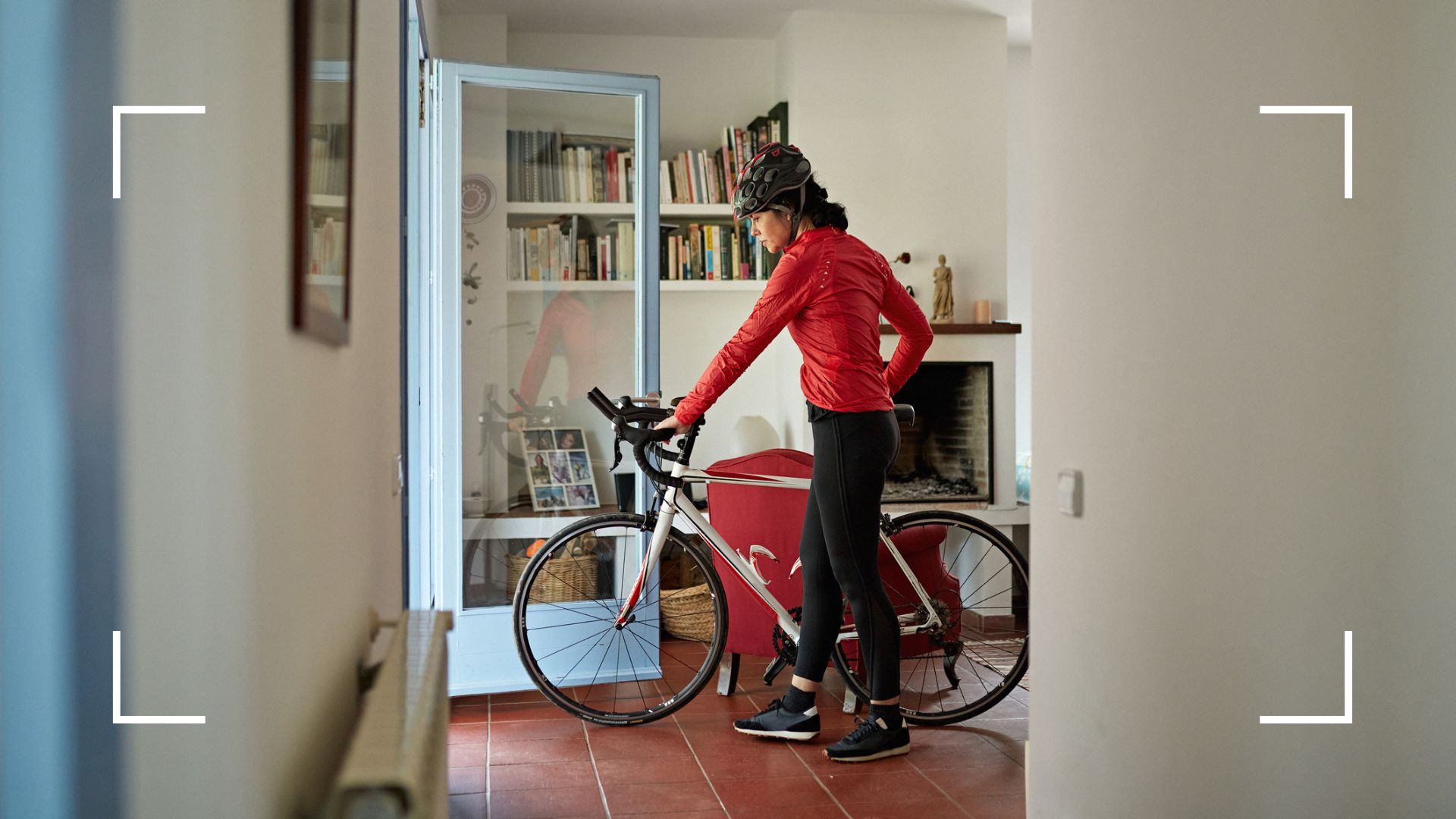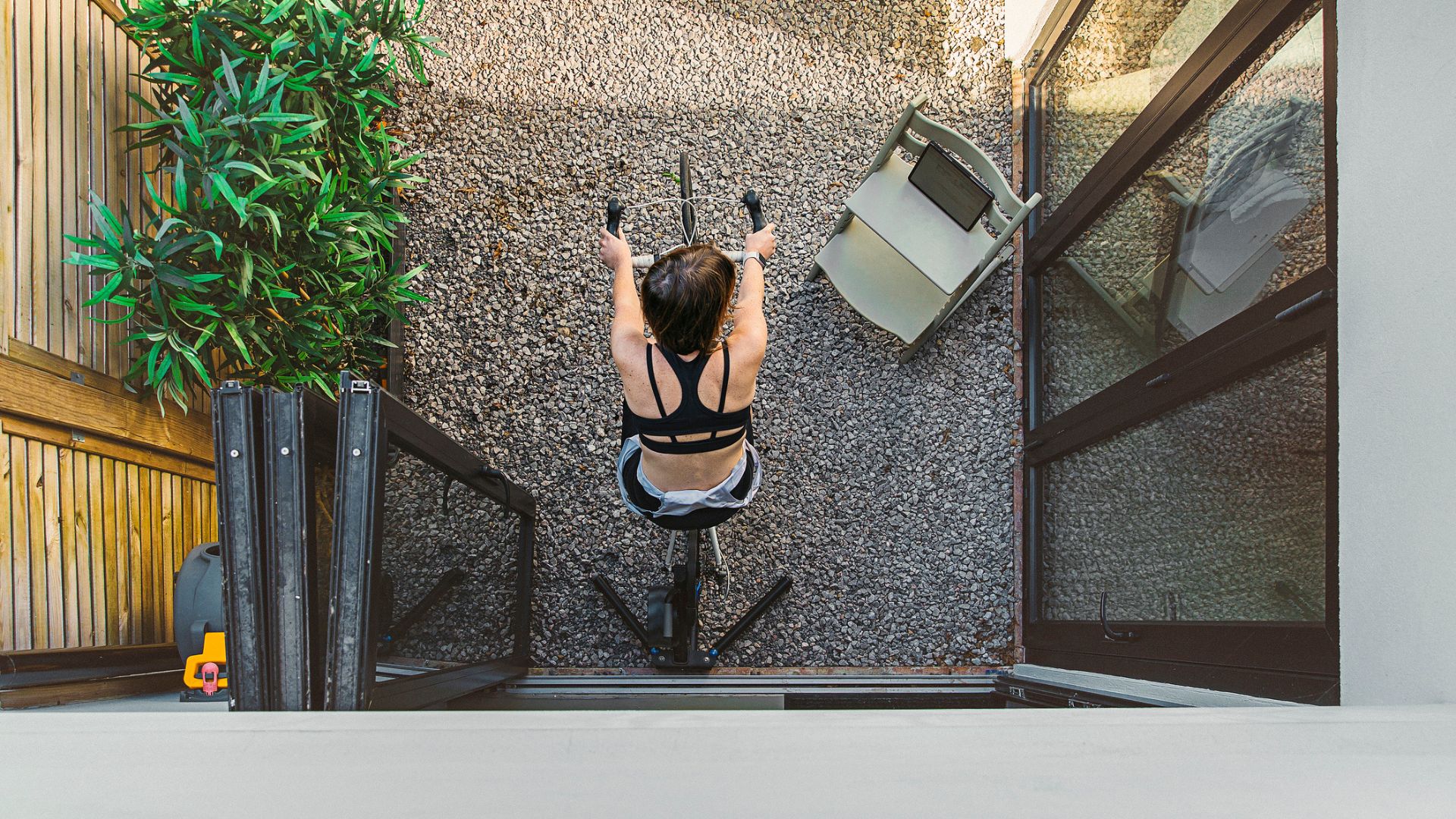
How many calories does cycling burn? We know that cycling is a good workout as one of the most popular forms of cardio around, but many people would be surprised to know that cycling actually rivals many other sports when it comes to burning calories.
If you're looking to lose weight, exercise can be an essential tool in your routine. While it's not the be-all-and-end-all of healthy weight loss - you'll need to change your eating habits to see major changes - it can help you burn calories and get into a good calorie deficit. Plus, there are so many other benefits to be had, from improvements in your fitness to a more positive mental attitude.
Doing cycling as a workout is one of the best ways to complement the changes to your eating habits if you're looking to learn how to lose weight without dieting. Here, to explain how many calories cycling burns, we speak to a master personal trainer.
How many calories does cycling burn?
Generally, women burn between 250 and 300 calories per 30 minutes, says Alannah Bray, master personal trainer. That works out to just over 500 calories an hour at minimum, rivaling other activities like rowing, ice skating, kayaking, and swimming. It's understandable if this is still more than you thought though, considering that cycling is a low-impact workout.
However, some people may burn more than this whilst others will burn less. How many calories you burn cycling will be dependent on several key factors, including age, gender, weight, fitness level, and the intensity and duration of your workout. So, for example, someone weighing more will burn more calories by doing the same amount of activity for the same amount of time as someone who weighs less.
Harvard Medical School lays out the number of calories a person will burn at three different weights per half an hour, depending on the style of cycling they do:
- Moderate cycling on a stationary bike: (56kg) 210 / (70kg) 252 / (83kg) 294
- Vigorous cycling on a stationary bike: (56kg) 315 / (70kg) 278 / (83kg) 441
- Cycling outdoors, 12 - 13.5mph: (56kg) 240 / (70kg) 288 / (83kg) 336
- Cycling outdoors, 14 - 15.9mph: (56kg) 300 / (70kg) 360 / (83kg) 420
- Cycling outdoors, 16 - 19 mph: (56kg) 360 / (70kg) 432 / (83kg) 504
- Cycling outdoors, more than 20 mph: (56kg) 495 / (70kg) 594 / (83kg) 693
- Mountain biking: (56kg) 255 / (70kg) 306 / (83kg) 357
The type of cycling that burns the most calories, per the research, is cycling outdoors followed by vigorous cycling on a stationary bike - aka. spinning for weight loss.
Your starting fitness role plays an often-underestimated role in how many calories you will be able to burn cycling. "As with all forms of cardiovascular exercise you need to improve your cardiovascular performance (as the name indicates)," says Bray, who works with Fitagain. "Improving your fitness lowers the amount of oxygen used to sustain the intensity. As you get fitter, maintaining the same pace will become easier, and therefore you burn fewer calories."
Equally, if you're new to exercise then you'll burn more calories as your body has to work harder to keep your heart, lungs, and muscles moving to maintain the effort.
"Monitoring your heart rate is a great indication as to how your fitness is improving, allowing you to challenge your body to work in the fat-burning zone," she says. "A simple way to work this out is 220 minus your age, this is roughly your maximum heart rate. Take 70% off this number and this is fat-burning territory. You’ll be surprised how slow you may need to go, to begin with. Mixing this up with high-intensity intervals will challenge the cardiovascular system more."

Is cycling a good way to lose weight?
Yes, weight loss is one of the many benefits of cycling on offer when paired with changes to your diet. "It has many beneficial factors to it, including sustainability, especially for those carrying excess weight," says Bray. "When it comes to cycling vs running or even walking, cycling offers support whilst still allowing you to be weight-bearing."
This means that impact on the body is low so you can exercise more often and in the long run, burn more calories. If you're carrying a little more weight, this is especially beneficial as you won't face the same issues with the joints that you would running or walking.
"Cycling is also a great form of exercise for those with balance issues, especially on fixed indoor bikes," says the personal trainer.
Does walking burn more calories than cycling?
Compared to the same research by Harvard, cycling burns many more calories than walking. For example, walking at 3.5 mph (17 min/mi) can help to burn between 107 and 159 calories per 30 minutes depending on how much you weigh, and even walking a little faster at 4 mph (15 min/mi) only burns a little more at 135 - 189 calories.
However, walking as a workout may be a better choice for beginners. Those new to exercise may feel more confident heading out for walking 30 minutes a day or even just heading out for a 10-minute stroll at lunchtime than hopping on a bike.
Tips for burning more calories when cycling
- Spend more time on the bike: "Keep trying to increase the time you spend cycling," says Bray. "Build this in stages by setting small goals each session, as this will keep you motivated."
- Introduce some HIIT into your workout: "Exercising in lots of different heart rate zones will train the heart to perform better, allowing you to burn more calories." Adding HIIT (high-intensity interval training), like circuit training or weighted workouts, can really help with this.
- Ride regularly: "Cycling is low impact so you don't need the same recovery time that resistance training requires," says Bray. "Cycling little and often may be the best approach for you. This will also allow it to become more of a habit than a chore."
- Consider when to eat: As noted, what you eat matters when it comes to losing weight sustainably - and this includes when you eat. "This is very individual," explains the personal trainer. "Some may need to eat prior to have more energy to perform, whereas others will need the energy following. Either way, listen to your body and consume foods that give good energy, not just calories. Think about bananas, oat muffins, nuts, etc."







